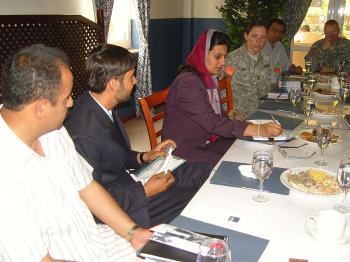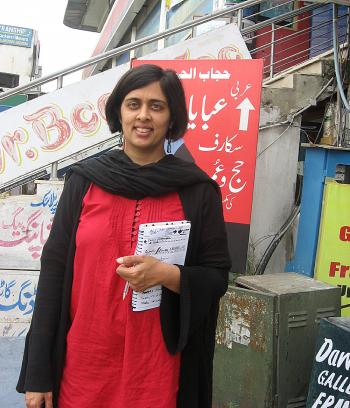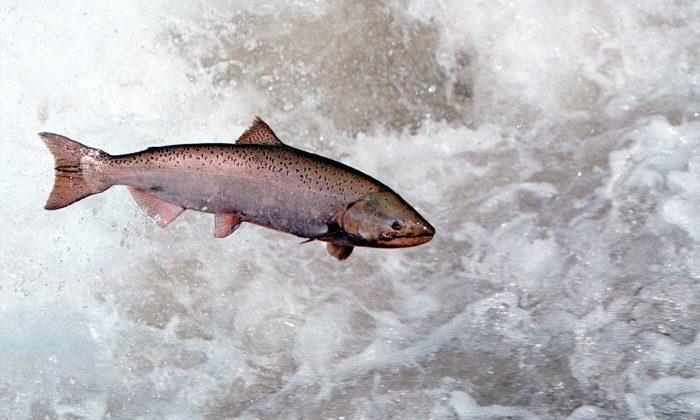According to a March report on press freedom in Afghanistan, the number of women training to be journalists there has sharply declined during the seven-year tenure of President Hamid Karzai. The report, issued by Reporters Without Borders (RSF), says that in the past few years, the percentage of female journalism students in Herat, Afghanistan, has dropped from 70 percent to 30 percent.
“They have the same problems as male journalists but stronger,” said Vincent Brossel, RSF’s Asia director. “Some of them have been threatened by the Taliban and extremists because they are women.”
Brossel spent a week visiting several cities in Afghanistan and interviewing government officials, journalists and advocacy groups. He said the situation for journalists in the conservative Islamic state has deteriorated, and women specifically are sometimes targeted.
For many female Afghan journalists, the pressure and dangers present too great of a risk. According to RSF, in the past seven years, several dozen female journalists have switched from reporting to administrative jobs, or quit the profession altogether.
“It was my dream to work as a journalist,” Nekzad said. “In Afghanistan, women have always been victims. I thought we should talk about women, about the problems of Afghan women, violence, human rights and women’s rights.”
Nekzad is one of the founders of the independent Pajhwok Afghan News, but she tendered her resignation in February to start a media center for Afghan women. She hopes the center can be a place to train and promote the progress of Afghan women in the field. But her work goes beyond a passion to promote female journalists and draw attention to issues affecting women.
“We would like to inform the international community about the reconstruction of Afghanistan and the situation that is happening in Afghanistan during this period of war,” she said.
Nekzad has been repeatedly threatened and harassed. One of the most dramatic instances was a failed kidnapping in 2003. Nekzad was working on a report about the Taliban and warlords set to stand trial for their crimes after Afghanistan joined the International Criminal Court.
The day after she received a warning from a high-level government official, a taxicab driver she had hired told her to stop working on the report. When she refused, the driver tried to kidnap her, and Nekzad was forced to jump out of the speeding cab to escape. Bloodied and shaken, she pulled herself together and went on to her scheduled training class for young female journalists.
“I didn’t tell them what happened; I just told them that I fell down,” Nekzad said. “I didn’t want them to get discouraged.”
International Women’s Media Foundation says Nekzad was given a Courage in Journalism award not only for her work, but for the example she sets.
“Women don’t have an equal voice in the world of journalism,” said Jane Ransom, executive director of the foundation. “We know from research and statistical information galore that we are still viewed at a different level.”
Ransom added that the promotion of female journalists helps the media in general get to the heart of sensitive topics.
“[Nekzad] told me stories about 13-year-old girls being traded for dogs. She said it’s a problem with no name,” Ransom said.
She said that for Nekzad, writing about the prob-lem created a context for a discussion about it in Afghan society.
“We believe women having an equal voice in the press is a critical press freedom issue,” Ransom said.
Press freedom, for men or women, is a tall order in a country such as Afghanistan. Outside of the few major cities, life is steeped in centuries-old traditions where warlords and the Taliban have gained the upper hand over Afghan military or police forces.
According to the Committee to Protect Journalists, in 2008 at least three foreign correspondents and two local reporters were kidnapped in Afghanistan. In the first few months of 2009, there was one confirmed and five unconfirmed journalist deaths.
Afghanistan’s neighbor to the southeast, Pakistan, is another minefield of challenges for journalists.
Haq says that reporting on the protests was a vivid lesson in the two worlds she is forced to straddle because of her ethnic heritage and American upbringing.
“For me, because I look Pakistani, I’m expected to behave a certain way, perhaps be a bit passive,” Haq said.
But she believes her dual perspectives on the East and West help her navigate the often tricky circumstances she has to work under. That vantage point is precisely what she tries to tap into when reporting.
“I think, ‘How can I tell this in a way that can create understanding between people?’” Haq said, adding that bridging the unwritten cultural norms in her work is the first step in that process. “A woman can go out in public and talk to different people, as long as the role is really clear.”
Even with that, she said, there are situations when she won’t go into the field by herself, and some cases where she couldn’t get the story if she were alone.
“I wouldn’t be able to walk into a mosque and interview a man; I wouldn’t be able to report it,” Haq said. “But I could interview a man in the street as long as I bring a companion along. You have to create a context for that.”
Carlotta Gall is the Kabul-based veteran war correspondent with The New York Times who reports on Afghanistan and western Pakistan. In December 2006, she was beaten in her hotel room in Quetta, Pakistan, by men who didn’t identify themselves. Her computer, notebooks and cell phone were all taken, and Gall was left with bruises on her arms, face and cheekbone, swelling on her eye and a sprained knee. The male photographer she was working with, Akhtar Soomro, also had equipment seized and was briefly detained.
“The al-Qaida element in the insurgency in Pakistan and Afghanistan has made it particularly dangerous for non-Muslim journalists, or anyone working for western news outlets,” Gall said. “Kidnapping has become a serious threat.”
Despite her share of challenges because of her gender, she has found advantages, too.
“Women can go into the female quarters of households. In conservative traditional areas, men who are not relatives are not allowed in these areas,” Gall said. “There are ways around this for men to interview or hear women’s views, but it is much easier as a woman.”
Gall maintained, however, that just because a reporter is a woman does not mean they bring some unique depth or perspective to a story.
“Compassion, stamina, whatever you need for journalism is sexless,” Gall said.










